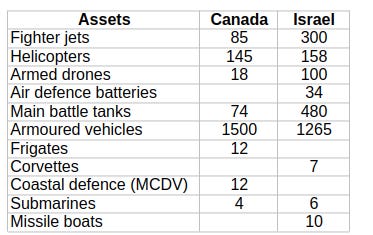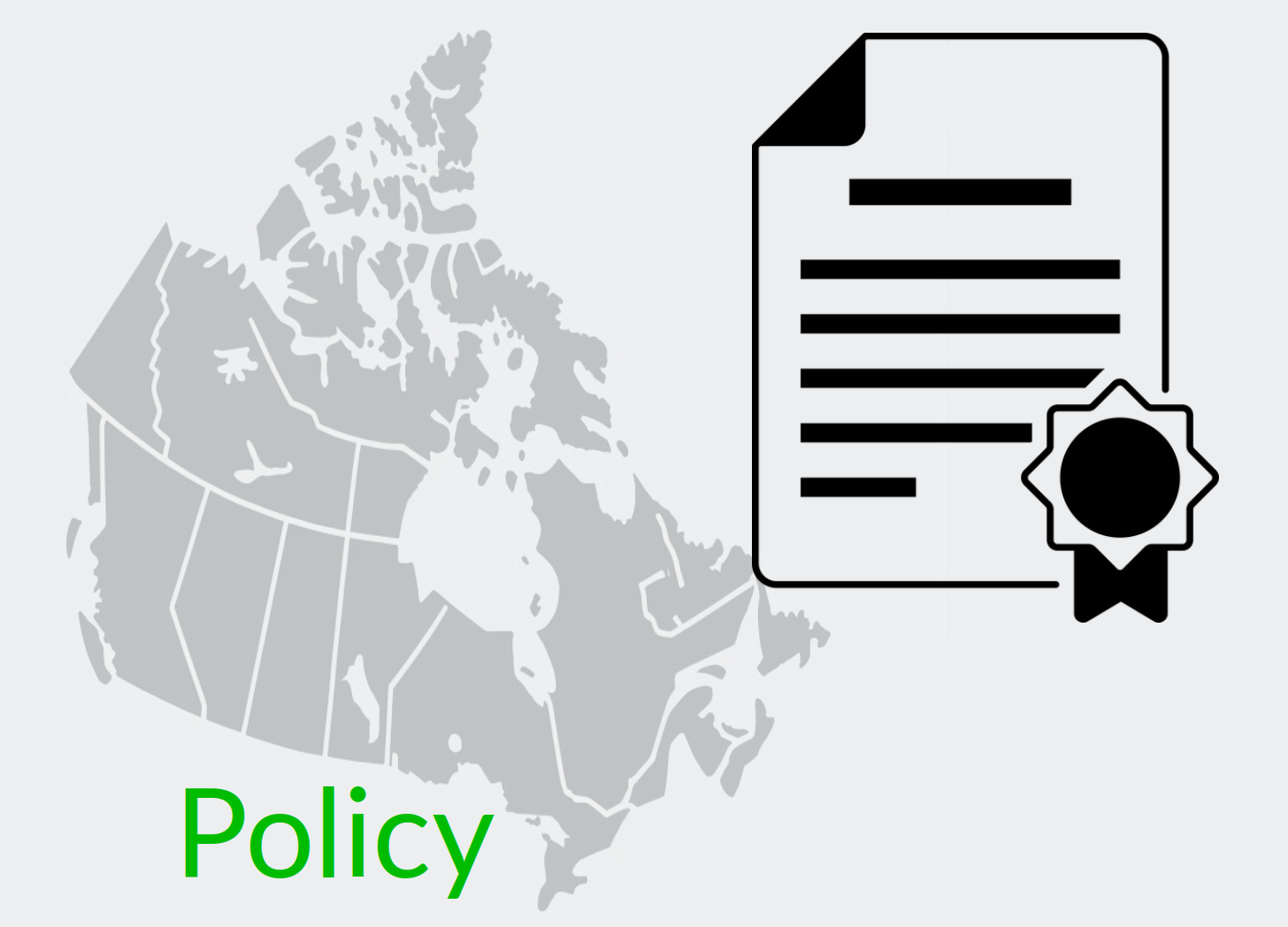How Much Dollar Value Does Our Military Deliver?
To my great surprise I recently noticed that, despite being deeply engaged in wars against at least four determined enemies, Israel doesn’t spend all that much more on their military than Canada does on its forces. What might that tell us about government efficiency?
There’s fairly universal agreement that Canada doesn’t spend enough on its military. But before we can even ask how much we should be spending, we should understand how much we’re already spending. And figuring that out isn’t nearly as easy as I’d expected.
According to the 2025–26 Expenditures by Purpose data released by the Treasury Board Secretariat, the Department of National Defence (DND) was allocated $35.7 billion (CAN). However, the New York Times recently reported that Primer Minister Carney’s $9.3 billion increase would bring the total defence-related spending to $62.7 billion - which suggests that, prior to the increase, we were set to spend $53.4 billion (CAN).
So I’ll work with both of those figures: $35.7 billion ($26 billion USD) and the pre-announcement $53.4 billion ($39 billion USD). By contrast, Israel currently spends around $37 billion (USD) on the Israel Defense Forces (IDF) which is in the neighborhood of 18 percent of their total budget.1 The IDF is (literally) getting a much bigger bang for their buck.2
I’m going to compare the military inventories of both countries to get a sense of what a dollar of government spending can get you. I understand that this isn’t an apples-to-apples comparison and there are many complicating factors here. But I think the exercise could lead us to some useful insights. First off, here’s a very rough estimate of existing inventories:
I’m sure there are plenty of caveats we could apply to those numbers, including how much of that equipment is actually fit for service on any given day. But they’ll have to do.
In addition, there are currently 68,000 regular troops in the Canadian Armed Forces (CAF) along with 22,500 reserves, while the IDF employs 169,500 regular troops and 465,000 reserves. They also cost money.
Based on some very rough estimates,3 I’d assess the value of IDF assets at around 2.6 times the value of comparable CAF assets. That means that the IDF - using their procurement systems - would need to spend just $14.4 billion (USD) to purchase the equivalent of the current set of CAF assets.
Now compare that with our actual (pre-increase) expenditures of either $26 billion USD or $39 billion USD and it seems that we’re overspending by either 80 percent or 270 percent.
I think we’d be wise to wonder why that is.
For full context, Israel receives around $3.8 billion (USD) in military aid annually from the U.S.
Speaking of which, for simplicity, I completely left the ongoing costs of ordinance out of my calculations.
If you’re really interested, you can see my calculations here.




From Substack ‘Black Cloud Six’:
‘The IDF is based on conscription. Their “regulars” are conscripts.
The CAF is staffed by professionals - people who do it for a career. Personnel costs are vastly higher. Our “defence spending” also includes military pensions and veterans affairs benefits - again vastly higher.
Then factor in the massive discounts Israel receives from the US by way of indirect subsidies…
It would be far, far better to compare Canada with another country with a fully professional military. For now, you’re comparing apples and oranges.’
David, a few questions come to mind. Primarily, what's included in the defense expenditure figures in the third paragraph? Apparently there are games played when it comes to counting that sort of thing, for example by including spending on Veteran support which is unrelated to the listed equipment. Another question is that you appear to assume that the listed equipment was purchased, whereas some of it is operated under a lease agreement.